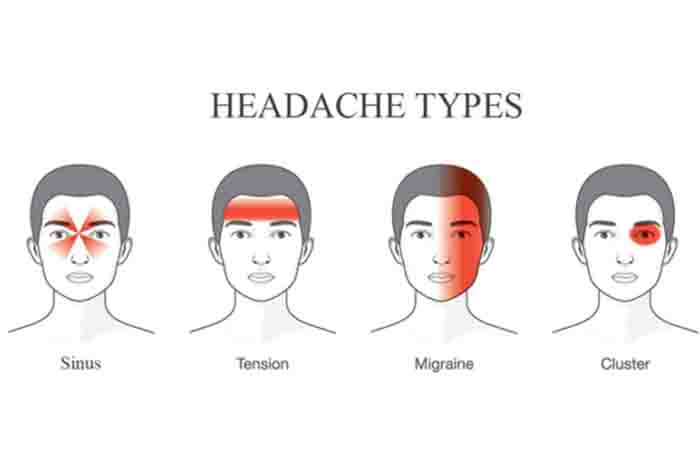
When there is pain in your head, it may be difficult to say whether you are experiencing a migraine or a typical headache. It is important to differentiate a migraine from a traditional headache. This would ensure quick relief through better treatments.
There are different types of headaches and everyone experiences it with a different symptom. Headaches can be severe and disabling. Although many people refer to moderate to severe headache as a migraine , there are specific criteria to identify a migraine and headache.
Here we have discussed all the types of headaches which will help get a clear picture of the difference between a migraine and a headache
Sinus Headaches
Sinus headaches resemble a sinus infection. You will have a stuffy or runny nose. Other symptoms may include fever, cough, facial pressure, tiredness, and congestion. You may also feel a constant pressure, pain and fullness in your eyebrows, cheeks, and forehead. It will get worse when you lie down or bend forward.
Tension Headaches
Tension headaches are the most common type of headache and affect many adults as well as teenagers. Tension headaches can be chronic and can occur repeatedly and may last for 30 minutes to a week for less than 15 days a month. Your scalp, head and shoulders may feel tender. You may feel pressure on the sides or back of your head or along the forehead. These headaches are generally caused due to tension and contraction in the muscles of head, neck, and shoulders.
Cluster Headaches
Cluster headaches are severely painful and occur on one side of the head. It is not a common type of a headache. At times, the pain is so bad that the person cannot sit still and keeps on moving. This is known as a cluster headache because it occurs in the group. It may occur 2-3 times a day during a cluster period. The exact cause of a cluster headache is not known yet, but some experts suggest that abnormalities in the biological system is the primary cause of this headache.
Migraines
Migraines develop through four stages, but it is not necessary that everyone may experience all of them. The four stages of migraines are:
- Prodome: This generally occurs one or two days before a headache. This stage includes mood swings, cravings for food, increase in thirst, stiffness in the neck and recurrent yawning.
- Aura: It generally occurs before or during a migraine. You might notice light flashes or bright spots, loss of vision, or involvement of body jerks.
- Headache: This lasts for 4-72 hours. You may experience throbbing pain on the sides of your head. This may also involve light sensitivity, lightheadedness, and nausea.
- Post-drome: This occurs after a migraine. You may feel dizzy and confused.
The exact cause of a migraine is not understood but environmental factors and genetics are considered as the main factor for a migraine.











